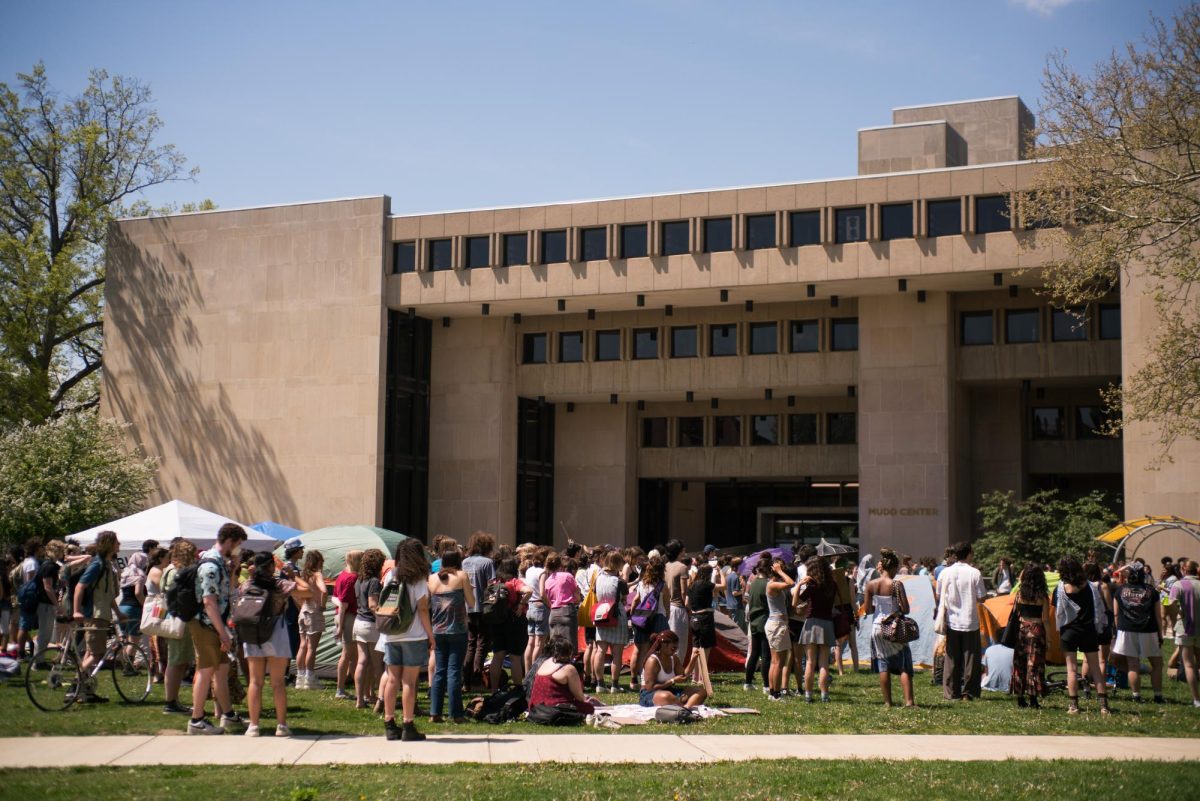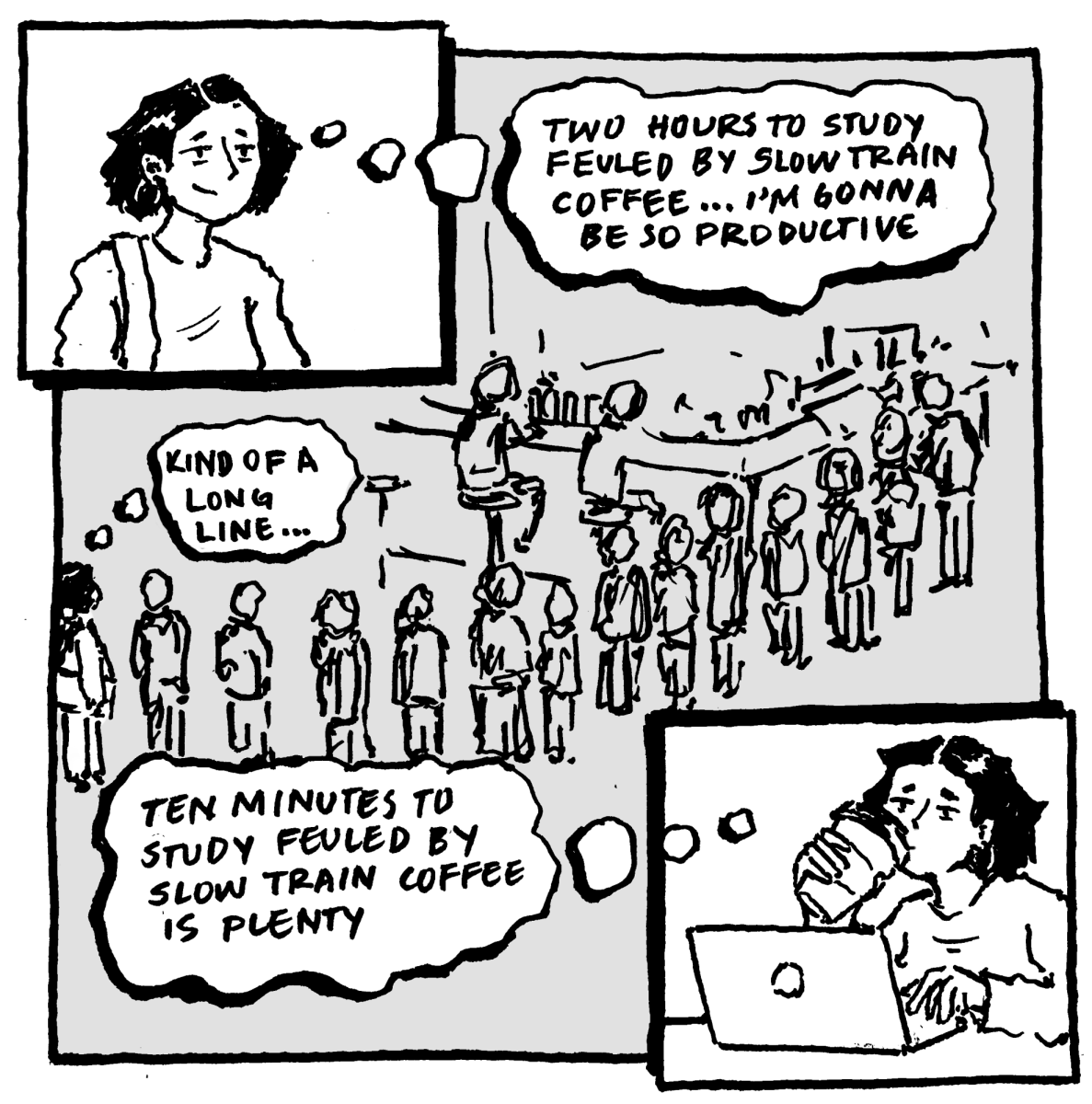For me, being a Muslim in the United States has meant constantly tempering others’ expectations about myself. The usual American image of a Muslim is one of extremes — extreme social and political opinions, excessive piety, and over-the-top worship through things like fasting and ritual prayer. When I tell people I’m Muslim, I often get a few predictable questions: Do I pray five times a day? What can’t I eat? Do I really fast the whole month of Ramadan? These obviously aren’t malicious, but they reveal an understanding of Islam as a tradition that is rigorous and monotonous and which produces people of a certain ilk.
That misunderstanding is the consequence of a noticeable lack of Muslim representation in spaces like Oberlin — that is, spaces that are predominantly white, American, Judeo-Christian, or any number of descriptors for our campus demographics. Because we are often a caricature in American minds instead of fully fleshed-out human beings, it can be hard to simply exist as people who are Muslims instead of the more all-encompassing label “Muslim people.”
Islam therefore becomes essentialized in a way that few other religious traditions are. You may hear about Islam’s stance (as a whole) on a particular subject, or the view of Muslims toward the U.S. or women’s rights. In an American context, those things are more often than not professed by non-Muslims whose expertise on Islam is limited to studying a region that is predominantly Muslim, by reading the Qur’an (sometimes through an English translation), or by looking to so-called “Islamic states” as the representatives of our faith.
Because of that, there is a very real sense that to fit into a place like Oberlin, we Muslims have to explain ourselves in order to differentiate our version of Islam from the one that pervades in American minds. Lamya H. provides a fantastic example of this in her book, Hijab Butch Blues. She recalls an instance at a party when she’s introduced to her friend’s partner. “I’m really glad we’re getting to know each other,” he says. “I would otherwise have studiously avoided the religious Muslim in the room.” Lamya, who wears a hijab, is shocked back into the reality that, even in a group that “pride[s itself] on nonnormativity,” her Muslimness stands out as a sign of abnormality.
More than abnormality, even, Islam is seen as a thing to be feared. Who knows how Muslims will engage in conversations about gender, about sexuality, about religious pluralism? I have found myself having to be extra cautious to make my liberal views on those subjects known so that I’m not immediately grouped into the default category of ultraconservative Muslim extremists. That is not to say that all Muslims share my views, but I don’t think the presumption that because one is Muslim they must be a political extremist is present for other religions. I certainly haven’t seen it pervade discussions about Christians and Jews so widely.
Those presumptions often aren’t conscious judgments on Muslims or Islamic faith. Rather, it seems, they are the result of a one-dimensional understanding of Islam and its adherents. Many Americans’ opinions on the religion — whether positive or negative — are not formed by listening to what Muslims have to say about themselves, but by absorbing media, analyses, stories, opinions, and anecdotes from those who claim to speak for us.
Reading articles like Bernard Lewis’ “The Roots of Muslim Rage,” which attempt to homogenize and then analyze two billion people in the simplest of terms, and hearing about societal panics over an abstract threat of sharia law to radicalize the country’s youth, are two of the most important ways Americans might interact with Islam on a daily basis. Even the word jihad has taken on its own meaning in the English language that is distinct from the original Arabic. Whereas in Arabic jihad means “striving” or “struggling” toward any praiseworthy (though often religious or spiritual) goal, the word has taken on an explicitly belligerent meaning in English. It is used to denote something equivalent to the widespread terrorism carried out by groups like al-Qaeda or the Islamic State group, and the term “jihadist” has emerged as an epithet of the most severe nature to describe barbaric Muslims committing vile and condemnable atrocities.
The United States has come a long way since 9/11 in understanding and portraying Muslims in ways that are not inherently violent or anti-American. But that space has not been filled by a clearer understanding of Islam. If anything, it’s created a vacuum — if Americans aren’t representing Muslims in stereotypical and essentializing ways, they aren’t representing them at all. By representation, I don’t mean a college brochure using a woman in hijab as evidence of the school’s diversity. I mean really, actively engaging with Muslims, listening to what they have to say, forming relationships with them, and including them as fellow human beings with complex and often contradictory views. That is severely lacking in modern American discourse.
At Oberlin, our Muslim Students Association is quite small. We have about 25 active members, and four people show up for Friday prayer in a good week. I imagine many students don’t know a Muslim colleague and don’t have much of an idea about who Muslims are. The answer, unsurprisingly, is that Muslims are not much different from everyone else. You don’t need to meet a Muslim to understand how they might behave or how they might think. We are ordinary people who believe in and/or grew up with the Islamic faith. That sounds like an unsatisfying conclusion to a piece covering such a broad topic, but if you’ve been following American news media for the past 20 years, you never would have guessed it was true.












